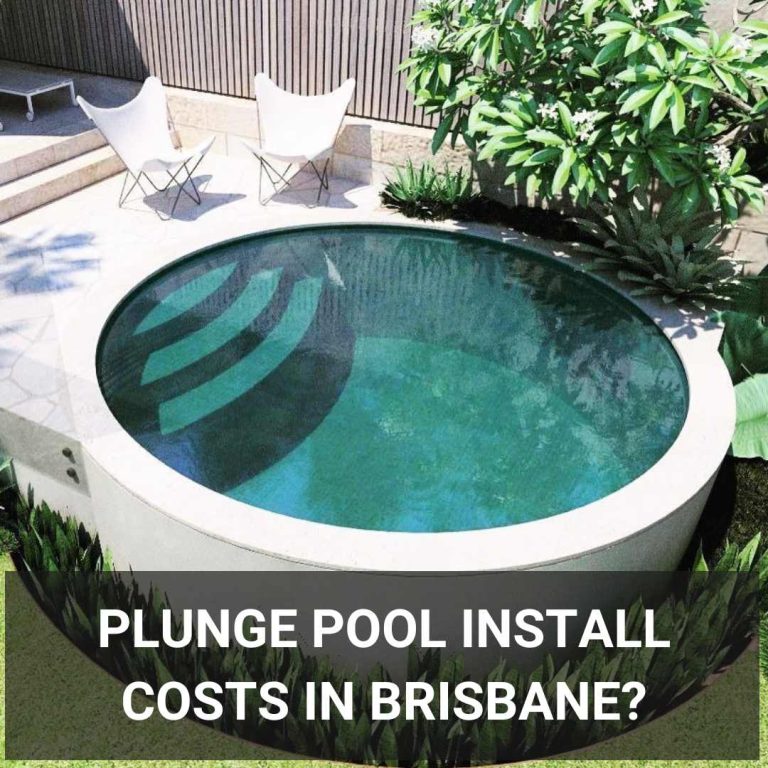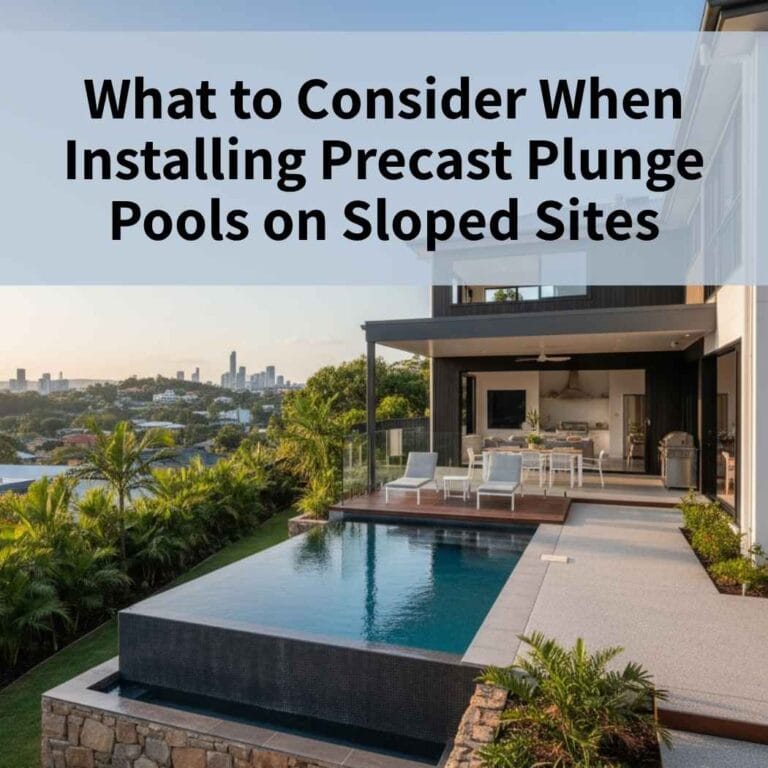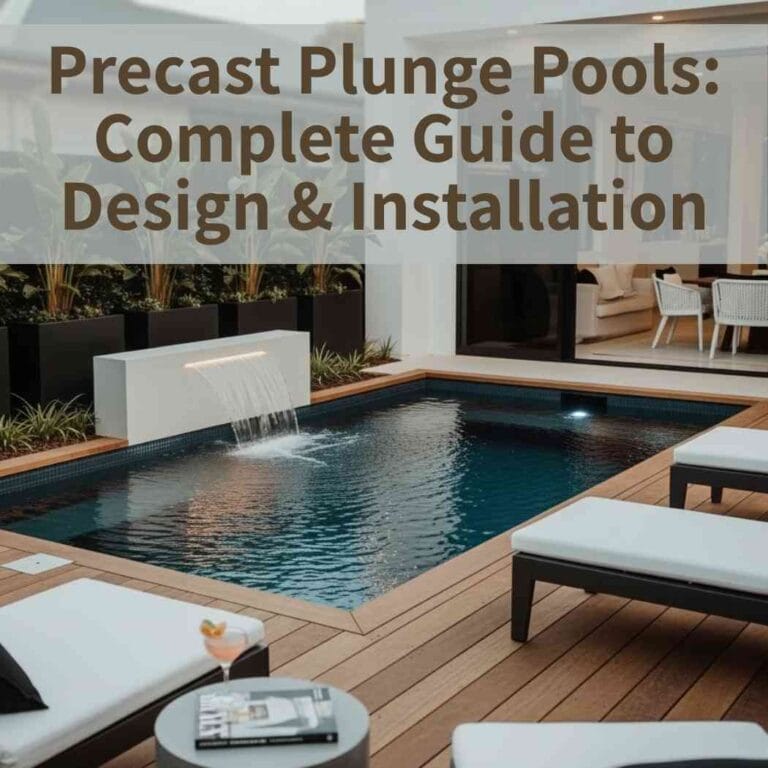
We at Plunge Pools Brisbane are committed to providing our customers with the highest-quality pools and spas. We have over two decades of experience in the pool industry and we believe that we can make a difference in the lives of our customers.
In this short article, we’ll talk about the difference between Above-Ground and Inground Plunge Pools.
Table of Contents
ToggleWhat Is an Above Ground Pool?
An above ground plunge pool is exactly what it sounds like—it sits above the ground, rather than being dug into the soil. These pools are a great option if you’re looking for a quicker and more budget-friendly way to cool down and relax in your backyard. Most are made from durable materials like precast concrete or fiberglass and can be installed in just a few days. They’re perfect for smaller spaces and don’t require major excavation, which makes the whole process a lot easier (and cleaner!). Plus, with clever decking or landscaping, they can look just as stunning as inground pools.
What Is an Inground Pool?
An inground pool is built into the ground, meaning we excavate your yard to create the space for it. It’s a more permanent and customisable option, offering a sleek, seamless look that blends beautifully with your outdoor space. Inground pools come in all shapes and sizes—from full-sized lap pools to compact plunge pools—and they’re perfect if you’re after that “resort at home” vibe. While installation takes a little longer than above ground pools, the result is a long-term investment in fun, relaxation, and home value.
Above-Ground Plunge Pool VS Inground Plunge Pool
When it comes to choosing between an above-ground and an inground plunge pool, there are a few things to consider.
Above-ground pools are typically less expensive and easier to install, but they may not offer the same aesthetic appeal as an inground pool. Inground plunge pools are more expensive and require more work to install, but they can be a beautiful addition to your home.
If you’re on a budget, an above-ground pool may be the best option. However, if you’re looking for a pool that will make a statement, an inground pool is the way to go.
Above Ground Pool Cost
If you’re looking for a more affordable way to enjoy a pool at home, an above ground pool is a great place to start. Prices can range from as low as $2,000 and can go up to $30,000 including installation and labour, depending on the material, size, style, and extras like decking or heating. The best part? Installation is usually fast and fuss-free, and many homeowners choose to DIY the setup. While it’s less of a long-term investment, it’s perfect for families who want to enjoy seasonal fun without breaking the bank.
Inground Pool Cost
An inground pool is a bigger commitment, both in terms of budget and build time—but it comes with long-term rewards. The starting price typically begins around $40,000 and can go well beyond that, especially if you’re adding custom features like lighting, water jets, or integrated spas. Costs vary depending on the material (fibreglass, concrete, or vinyl), pool size, and site conditions. While it’s a larger upfront investment, an inground pool often boosts your home’s value and provides a polished, luxurious look that lasts for years.
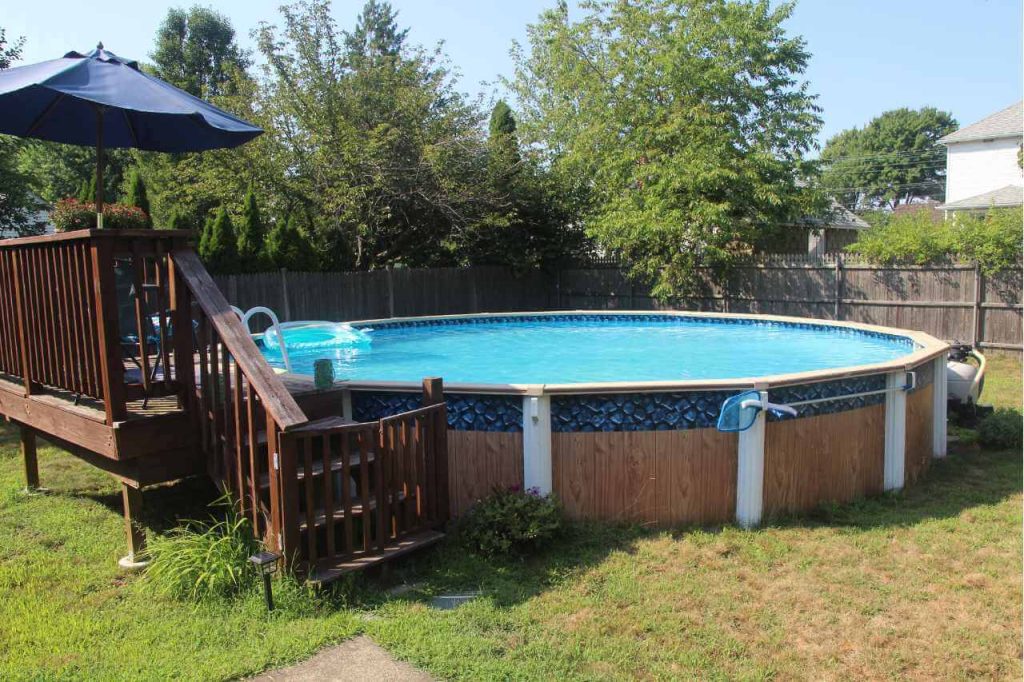
Above-Ground Plunge Pool Installation Made Simple
Thinking about installing an above-ground plunge pool? You’re not alone! With so many shapes, styles, and materials available, it’s easy to feel overwhelmed—but don’t worry, we’ve got you covered.
Most above-ground plunge pools come in a kit, which usually includes everything you need: the pool frame, liner, and sometimes even a ladder, filter pump, or built-in chemical dispenser. You can either set it up yourself or hire a professional—both options are totally doable depending on your comfort level.
Here’s a simple breakdown of the process:
Step 1: Pick the Right Spot
Choose a level area in your backyard with enough space. You might need to clear out any rocks, tree stumps, or roots before you get started. Make sure the ground is flat and stable—this helps your pool stay secure and prevents future issues.
Step 2: Choose Your Liner
There are two main types of liners: vinyl liners and beaded liners.
- Vinyl liners are more common and easier to install.
- Beaded liners look great but are a bit trickier to work with and usually cost more.
Step 3: Build the Frame
Start assembling the pool’s frame, making sure it’s perfectly round (or oval, depending on your pool). Take your time to level everything out and ensure all support beams connect securely, usually through strong T-joints.
Once your pool is assembled and filled, you’re nearly there! Just hook up the filter, add the right chemicals, and you’re ready to take the plunge.
If you’re unsure at any stage, don’t stress—plenty of pool owners hire professionals for a smooth, worry-free setup. Either way, you’re on your way to creating a relaxing retreat right in your own backyard!
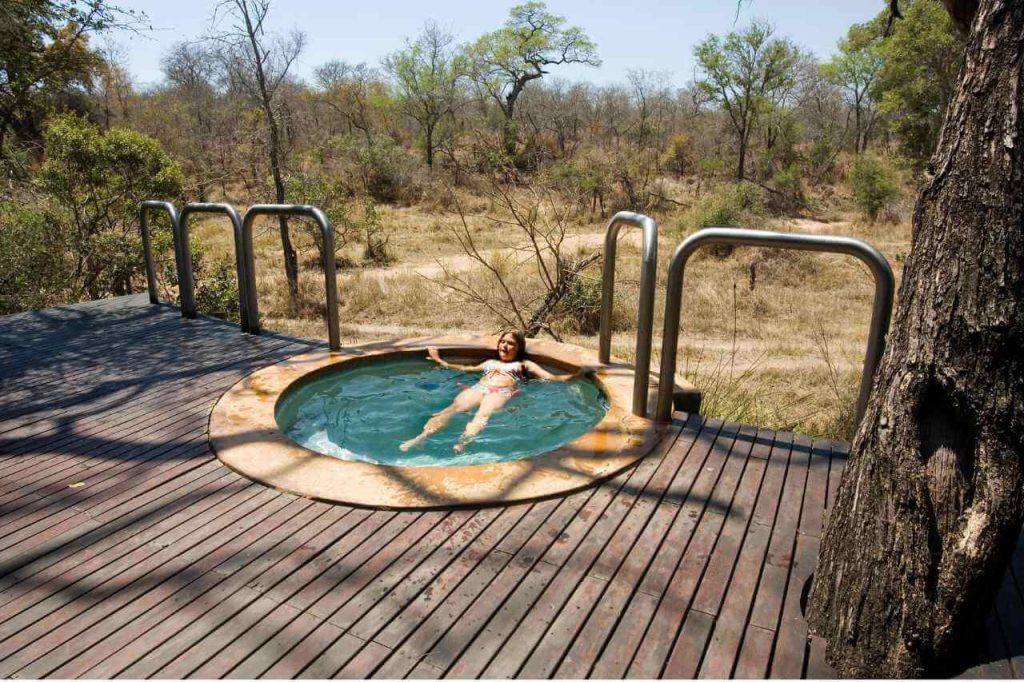
What’s the best Inground Plunge Pool?
Whether you’re building your first inground plunge pool or giving your outdoor space a fresh new look, choosing the right pool type is a big decision. With so many options out there, it helps to know the pros and cons of each one before diving in.
One of the most important things to consider? The material of your pool. It affects everything—from how long the pool will last to how much maintenance (and money) it’ll take over time.
Here’s a quick and friendly breakdown of your best options:
Precast Concrete Plunge Pools
Looking for something budget-friendly and built to last? Precast concrete plunge pools are a fantastic choice. They’re more affordable than traditional concrete pools, easy to install, and known for their durability. Plus, they come pre-moulded, so installation is quicker and cleaner.
Fibreglass Plunge Pools
Fibreglass (we don’t offer this at the moment) is another great option if you’re after low maintenance and long-lasting quality. These pools are non-porous (which helps keep algae at bay), come in a variety of colours, and are well-suited for areas with unpredictable weather. They’re also smooth to the touch and easy to clean—win-win!
Vinyl-Liner Plunge Pools
Vinyl-liner pools (we don’t offer this at the moment) are often the cheapest upfront, but keep in mind that the liner usually needs to be replaced every 5 to 9 years. So while they’re wallet-friendly at first, ongoing maintenance can add up over time.
Summary
When it comes to choosing between an above-ground and inground plunge pool, it all comes down to your needs and budget. Above-ground pools are easier and quicker to set up, cost less, and are great for families looking for a simple and low-maintenance option. On the other hand, inground pools offer a more permanent, luxurious feel with better durability, customisation, and long-term value. Both have their perks—it’s just a matter of what suits your space, style, and lifestyle best.
If you’re looking for a more luxurious option to create an authentic summer atmosphere in your garden or backyard, we are your experts for your inground plunge pool experience in Brisbane!
For more information on inground plunge pools, feel free to contact us and fill out the form below.
What’s Next To Do?
Are you interested in installing an inground plunge pool? Read our article on the Best Inground Plunge Pool.
Frequently Asked Questions
Are above ground or inground pools better?
Whether an above-ground or inground pool is better depends on your budget, space, and lifestyle. In warmer climates or for homeowners seeking a permanent, luxurious feature, inground pools are often preferred. But if you’re working with a tighter budget or want a quicker, less invasive setup, an above-ground pool can be the perfect fit.
Why Aren’t Above Ground Pools Deeper?
Most above-ground pools are designed with a uniform, flat bottom, and the liners that come with them are made to fit that standard shape. Making the pool deeper—like adding a deep end—can stretch or wrinkle the liner, especially if it’s not installed just right. Plus, the structure itself isn’t built to support the added water pressure from extra depth. So, for safety, stability, and ease of setup, most above-ground pools stick to a shallower, even depth.
What Are the Disadvantages of an Above Ground Pool?
While above-ground pools are budget-friendly and quick to install, they do come with a few drawbacks:
- They don’t increase property value – Unlike inground pools, above-ground options are seen as temporary and often aren’t considered a big selling point when it’s time to move.
- Less durable over time – These pools typically don’t last as long as inground ones and can be more prone to wear and tear from weather or regular use.
- Limited design options – Customisation is minimal. You’re mostly limited in size, shape, and features compared to the versatility you get with inground pools.
Is It Worth Getting an Above Ground Pool?
Absolutely—if you’re after a fun and affordable way to cool off at home, an above-ground pool can be totally worth it. It’s much cheaper than an inground pool, and you can have it set up quickly, even as a DIY project. While it might not add value to your property, it does offer great seasonal enjoyment for families, especially during hot summer days. If you’re not ready to commit to a permanent pool, this is a great way to dip your toes into pool ownership—literally!

